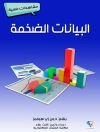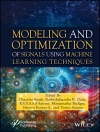Multimodal transport network customers need to be directed
during their travels. A travel support tool can be offered by a
Multimodal Information System (MIS), which allows them to input
their needs and provides them with the appropriate responses to
improve their travel conditions.
The goal of this book is to design and develop methodologies in
order to realize a MIS tool which can ensure permanent multimodal
information availability before and during travel, considering
passengers’ mobility.
The authors propose methods and tools that help transport network
customers to formulate their requests when they connect to their
favorite information systems through PC, laptop, cell phone,
Portable Digital Assistant (PDA), etc. The MIS must automatically
identify the websites concerning the customer’s services.
These sites can, in fact, represent transport services, cultural
services, tourist services, etc. The system should then be able to
collect the necessary travel information from these sites in order
to construct and propose the most convenient information according
to the user’s requests.
Contents
1. Agent-oriented Road Traffic Simulation, René Mandiau,
Sylvain Piechowiak, Arnaud Doniec and Stéphane
Espié.
2. An Agent-based Information System for Searching
and Creating Mobility-aiding Services, Slim Hammadi and Hayfa
Zgaya.
3. Inter-vehicle Services and Communication, Sylvain Lecomte,
Thierry Delot and Mikael Desertot.
4. Modeling and Control of Traffic Flow, Daniel Jolly, Boumediene
Kamel and Amar Benasser.
5. Criteria and Methods for Interactive System Evaluation:
Application to a Regulation Post in the Transport Domain, Houcine
Ezzedine, Abdelwaheb Trabelsi, Chi Dung Tran and Christophe
Kolski.
İçerik tablosu
Preface xi
Slim HAMMADI and Mekki KSOURI
Introduction xiii
Chapter 1. Agent-oriented Road Traffic Simulation 1
René MANDIAU, Sylvain PIECHOWIAK, Arnaud DONIEC and
Stéphane ESPIÉ
1.1. Introduction 1
1.2. The principle of multi-agent systems 2
1.3. General remarks on traffic simulation devices 8
1.4. Archi Sim simulator 12
1.5. The issue of traffic simulation in intersections 14
1.6. Assessment of different scenarios 21
1.7. Conclusion 25
1.8. Bibliography 26
Chapter 2. An Agent-based Information System for Searching
and Creating Mobility-aiding Services 31
Slim HAMMADI and Hayfa ZGAYA
2.1. Introduction 31
2.2. Formulating the problem 33
2.3. The global architecture of the system 36
2.4. Proposal of a resolution system with several interactive
entities: a dynamic multi-agent system 42
2.5. The behavior of a scheduling agent 44
2.6. Managing system robustness when dealing with disruptions:
advancing a negotiation process between stationary and mobile
entities 59
2.7. The usefulness of a dedicated dynamic ontology 61
2.8. Simulations and results 64
2.9. Conclusion and perspectives 76
2.10. List of abbreviations 76
2.11. Bibliography 77
Chapter 3. Inter-vehicle Services and Communication
81
Sylvain LECOMTE, Thierry DELOT and Mikael DESERTOT
3.1. Introduction 81
3.2. The specificity of inter-vehicle communication 84
3.3. Inter-vehicle communication 91
3.4. Deployment and maintenance 95
3.5. What kind of future can we envisage for inter-vehicle
services and communication technologies? 107
3.6. Bibliography 107
Chapter 4. Modeling and Control of Traffic Flow 111
Daniel JOLLY, Boumediene KAMEL and Amar BENASSER
4.1. General introduction 111
4.2. Microscopic models 114
4.3. Macroscopic models 118
4.4. General remarks concerning macroscopic and microscopic
models 127
4.5. Hybrid models 129
4.6. Different strategies for controlling road traffic flow
systems 147
4.7. Conclusion 164
4.8. Bibliography 164
Chapter 5. Criteria and Methods for Interactive System
Evaluation: Application to a Regulation Post in the Transport
Domain 173
Houcine EZZEDINE, Abdelwaheb TRABELSI, Chi Dung TRAN and
Christophe KOLSKI
5.1. Introduction 173
5.2. Principles and criteria of evaluation 174
5.3. Methods, techniques and tools for the evaluation of
interactive systems 181
5.4. Toward automated or semi-automated evaluation assistance
tools 201
5.5. Proposal of a generic and configurable environment to aid
in the evaluation of agent-based interactive systems: EISEval
213
5.6. Context of operation of the proposed evaluation environment
217
5.7. Conclusion 228
5.8. Bibliography 230
List of Authors 241
Index 245
Yazar hakkında
Mr. Hammadi is Full Professor at the Ecole Centrale de Lille and Director of the LAGIS Team on Optimization of Logistic systems.
Mr. Ksouri is Professor; Head of Systems Analysis, Conception and Control Laboratory (Tunis El Manar University, National School of Engineer of Tunis ENIT).












